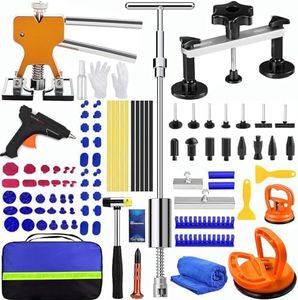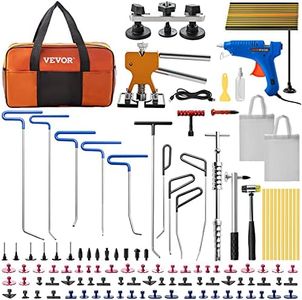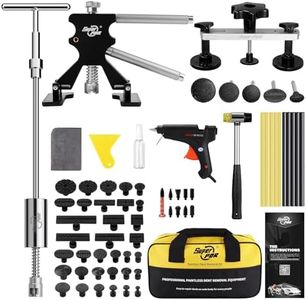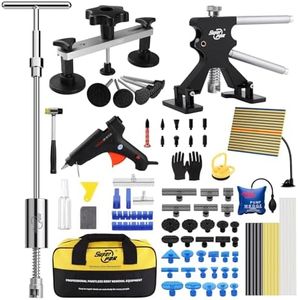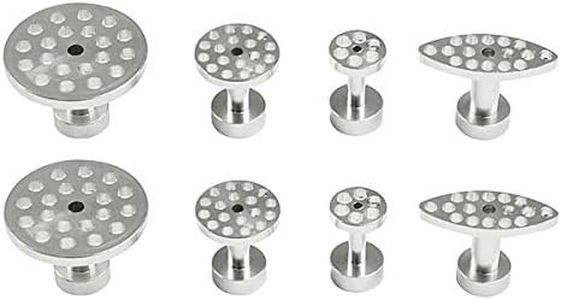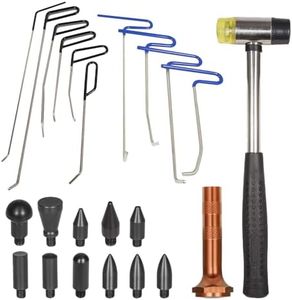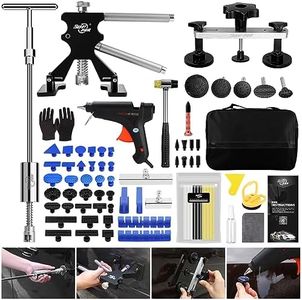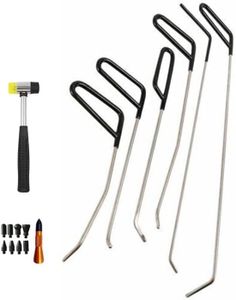We Use CookiesWe use cookies to enhance the security, performance,
functionality and for analytical and promotional activities. By continuing to browse this site you
are agreeing to our privacy policy
10 Best Pdr Tool Kits
From leading brands and best sellers available on the web.Buying Guide for the Best Pdr Tool Kits
Choosing the right PDR (Paintless Dent Repair) tool kit can help you restore your car's panels to a smooth, dent-free look without the need for paint or body fillers. Whether you're a DIY enthusiast or a budding professional, it's important to select a kit that matches your skill level, vehicle type, and the kind of dents you'll be repairing. Understanding the main features of PDR tool kits will make your shopping experience more straightforward and ensure the tools you buy are safe, practical, and effective.Number and Variety of ToolsThis spec refers to how many pieces are included in the PDR tool kit and what types of tools are provided. A basic kit may include just a few rods and a glue puller, while comprehensive kits have dozens of tools, including different shapes and sizes of rods, hammers, tap down tools, and more. A larger number of varied tools helps you tackle multiple dent types and locations. Beginners working mainly on small, accessible dents can choose a smaller, simpler kit, while those expecting to handle a range of dent sizes and positions, or who want to be more professional or versatile, should look for kits with a bigger variety.
Material Quality and ConstructionMaterial quality refers to the durability and performance of the tools, commonly made from stainless steel, carbon steel, or tempered alloys. High-quality metals are less likely to bend or break during use and may have polished tips to avoid scratching paint. Cheaper materials might save money upfront but may not hold up to repeated use. If you plan to use the tools frequently or for deeper dents, prioritizing higher-quality materials is smart, while lighter or plastic tools might suffice for occasional, minor DIY repairs.
Included AccessoriesAccessories often found in PDR tool kits include glue guns, glue sticks, pull tabs, knockdown punches, rubber hammers, and cleaning cloths. Some kits also come with carrying cases for organization. The type and quantity of accessories determine how independently you can work and how professional your repairs will look. For simple dent-pulling tasks, basic accessories may be enough, but for those who want a polished, finished result, or who are working in different locations, look for kits loaded with relevant accessories.
Ease of UseEase of use is about how beginner-friendly the kit is. Simple kits with well-labeled tools and clear instructions are easier for newcomers, while advanced kits with complex or specialized tools are better for users with some experience. Think about your comfort level and how much guidance you’ll need; if you’re a first-timer, opt for sets that include manuals, online support, or even color-coded tools.
Tool Sizes and ShapesThe size and shape of the tools dictate the kinds of dents you can fix and in which parts of the car. Long, slim rods reach further into body panels, while shorter, curved tools fit into tighter areas. Big, flat tabs are useful for large, shallow dents and small, round tabs or pointy tools are for minor, pinpoint damage. Assess the common dent areas of your car and match the kit to those needs. If you’re dealing mostly with small door dings, a few small-to-medium tools will do, but if you need to reach across deeper panels or varied shapes, you’ll want more options.
Safety FeaturesSome kits come with protective gloves, anti-slip tool handles, or rounded tool edges to prevent injury or accidental damage to your car's paint. If you value extra security or if you’re new to this kind of repair, look for kits that highlight these safety aspects. This is especially important when working in awkward positions or with heavy force.
